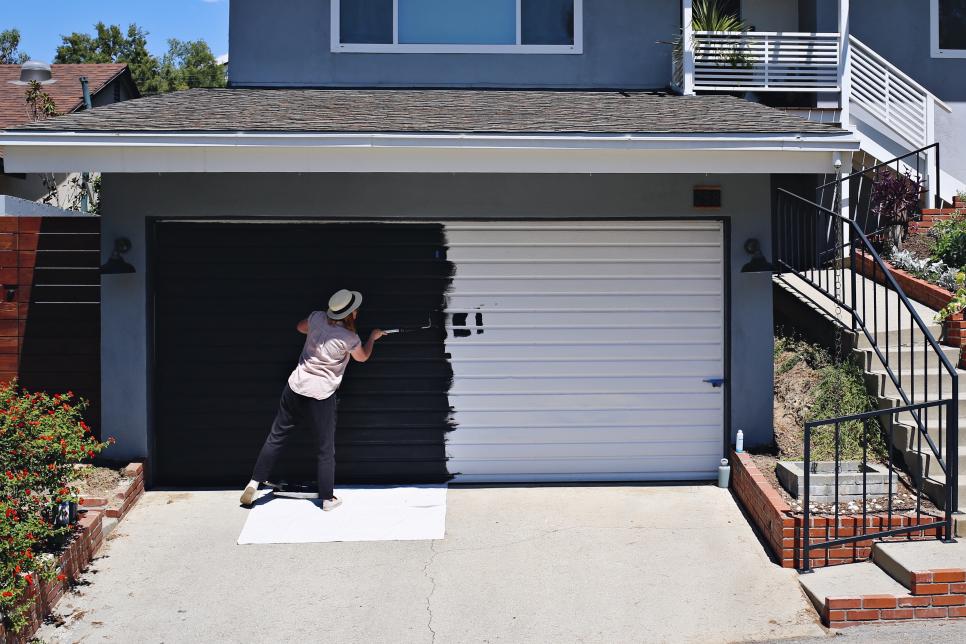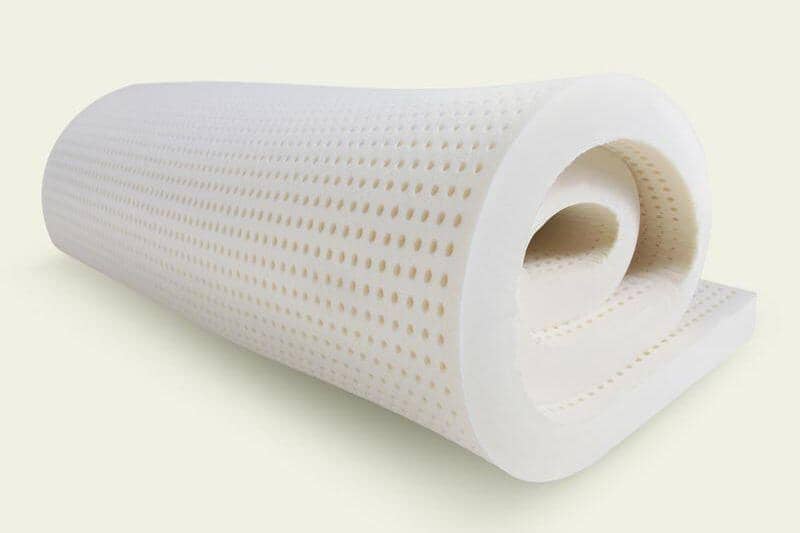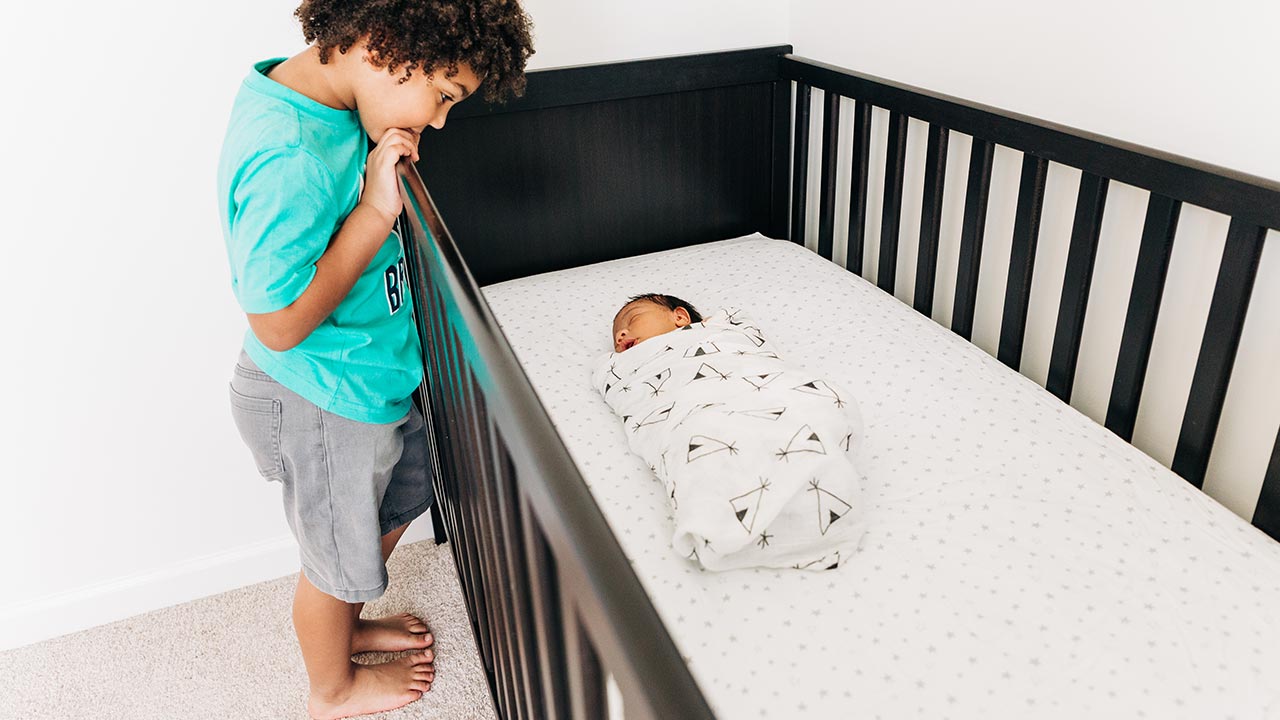Home Improvement
Installing Your Own Garage Door Panels a Quick Guide

Where space permits, houses usually have garage doors. They last for a long time but due to accidents or regular wear and tear, it becomes necessary to look for a replacement. But before you have your entire door replaced, consider checking first if you can remedy the problem with garage door panels. Garage panels only form a part of your actual door so replacing them will be cheaper.
Your options
While garage doors have more of a functional purpose, they are a major part of your house’s exteriors so it’s important for you to choose how to adjust garage door cables panels accordingly. Your best bet still is to go to your original door’s manufacturer to look for panels you can use. This way, you are assured that the panels will be compatible with your door. There is a range of styles available to you when it comes to panels so don’t worry about finding one you can work with. Some of your options though include flush panels, long raised panels, short raised panels, and painted panels. If you want, you can use this time to add character to your garage door by installing a window panel. Panels are usually available in wood or steel.
Installation
You can easily install garage door panels on your own. Turn it into a home improvement project and involve the entire family. Not only will this make the work quick but you also get to enjoy bonding time with everyone. To get you started on repairing those panels, make sure that your door opener is unplugged. After that, remove the strings to ensure that your door will not spring open while you are working. Close the door afterward as you would, pull it all the way down.
To remove old panels, unscrew the panels you want to remove. All panels are attached to the track rollers and each other so if the panel you are removing is not at the top, then you’re going to have to remove all panels before it sliding them up. Slide out the panel you want to remove when all others are cleared to let it through.
In putting back new garage panels, just do the reverse of what you did to remove the panels. Once all panels are in place, slide in the top panel back and attach everything. Open your door and then re-attach the spring. After that, you’re done!
Safety first
However, if none in your family have the skills necessary, please be concerned about your safety first and let the professionals handle the installation. A garage door panel is never enough of a reason to get hurt.
You’re Garage Door Safety Tips
Have you ever given any consideration to the safety functions of a garage door, or even how life-threatening or defective it can be? Normally the majority of people make use of a garage door more than once every day. Because as frequently as your garage doors are used it is vital to take into account any maintenance and basic safety concerns. There are lots of moving components that could become loosened and then cause a failure and contribute to someone getting hurt or having property damage. Just stop and think about this, the garage door could be the heaviest working component of the house. It is a motor-driven piece of equipment that is frequently getting raised and lowered over your automobile in addition to your entire family.
Conclusions
Through the years there have been several different versions of doors placed in houses that can range from individual panel doors that kick out to one-piece roller doors, nonetheless, the most popular model will be the panel garage doors. These kinds of doors are actually standard panels hinged to one another that have been mounted on tracks using a spring system to aid with opening the door. They can be manually operated but these days the majority of them employ a door opener which has a remote opening device allowing you to open and close the door from the inside of the car.
Home Improvement
Benefits of Waterproof Painting Before Monsoon Season

There is something magical about the monsoon. The cool wind, the pitter-patter of raindrops and the fragrance of wet earth make everything feel new and lively. But as much as we enjoy the shift in weather, our homes often bear the brunt. Can you already see the paint peeling just a few days into the season? Maybe a wet spot inching its way down the ceiling. That’s the monsoon causing damage silently.
The good news is that waterproof painting can help you prevent it before it starts. It’s not just about adding some colour to your walls. It’s building a potential layer of defence against moisture, mould and long-term harm.
Here’s why it’s a good idea to get waterproof painting done before the rains begin to fall.
1. Protects Walls from Damp and Mould
Rainwater doesn’t just stay outside. Unprotected, it makes its way into your walls, leaking through cracks and porous surfaces. What ensues is an array of nasty surprises, such as splotches of moisture, mushroom growth, and mildew odour that never quite disappears. Waterproof paints provide a protective barrier that repels moisture before it can do real damage.
It means you can enjoy the monsoon without dreading black patches climbing up your walls.
2. Prevents Paint Peeling and Bubbling
You’ve just painted your house. It looks fresh and bright. Yet come monsoon, you find the paint bubbling, cracking, or worse, peeling off in strips. Why? Because regular paint isn’t equipped to withstand bouts of heavy rain and humidity like this.
Waterproof paint is specifically designed to last. It’s not something that just sits on the surface. It actually bonds with the wall. It remains intact even when the weather shakes things up. So, your walls look as good as new, season after season.
3. Keeps Interiors Fresh and Healthy
A damp home is not only unpleasant. It can be unhealthy. Mould spores and high levels of humidity in the air can cause respiratory problems, skin irritations and allergies. If you have little kids or older family members living at home, that’s even more worrisome.
By waterproofing your walls, you are helping to keep a drier, healthier indoor room environment. It’s one of those things that can make a big difference for your family’s comfort.
4. Boosts the Longevity of Walls and Paintwork
Water damage weakens the wall structure over time. You may not notice it immediately, but cracks start forming, plaster begins to chip, and you’ll find yourself calling the repair guy more often than you’d like. Waterproof paint adds an extra layer of strength, reducing the wear and tear caused by repeated exposure to moisture.
5. Improves Curb Appeal
Lastly, don’t forget the looks. Rainwater streaks, fading colours, and flaky walls can make even the best-designed home look shabby. Waterproof paint helps your exterior walls stand tall through stormy weather. It resists stains, keeps colours vibrant, and gives your home a neat, clean finish, rain or shine.
Final Words
Monsoons are meant to be enjoyed with a hot cup of chai and the sound of raindrops, not worries about wall damage. Waterproof painting is simple, smart, and saves you from stress later. If you haven’t done it yet, this is your sign. Get it sorted before the clouds roll in.
Home Improvement
The Ultimate Guide to Choosing a Latex Mattress Topper in 2025

A latex mattress topper can transform your sleep experience, offering a cost-effective way to enhance comfort, support, and durability without replacing your mattress.
A latex mattress topper is a versatile solution for addressing an overly firm bed, seeking pressure relief, or aiming for a more eco-friendly sleep environment.
In this article, you’ll explore latex mattress toppers’ benefits, types, and considerations, providing actionable steps to help you select the perfect one for your needs.
What Is a Latex Mattress Topper?
A latex mattress topper is a 1- to 4-inch layer of latex foam placed on top of an existing mattress to improve its comfort, support, and longevity. Unlike full mattresses, toppers are designed to modify the feel of your bed without altering its core support structure.
These are toppers manufactured using natural latex, which is latex produced using the sap of rubber trees, or synthetic latex combinations. They are very mature, breathable, and non-hypoallergenic.
Such certifications as GOLS (Global Organic Latex Standard) and GOTS (Global Organic Textile Standard) also guarantee organic, eco-friendly materials, which is why these sleeping products are among the favorites of health-conscious and environmentally conscious consumers.
Types of Latex Mattress Toppers
There are two main types of latex mattress toppers with some unique features:
Dunlop Latex: made by a thicker, more straightforward process, the Dunlop latex is denser and longer-lasting. It works best with back and stomach sleepers who require substantial support.
It is slightly less breathable than Talalay, which makes it a worthy alternative that will save you some money without sacrificing durability.
Talalay Latex: Talalay latex is lighter, softer, and more breathable, and is produced through a more complicated process, including vacuum-sealing and flash-freezing.
It is ideal for side sleepers or individuals who want a plush, responsive mattress. Its open-cell design makes it an excellent option for hot sleepers.
Both of these types occur in organic forms, which are certified by GOLS, free of synthetic fillers or toxic chemicals.
Other toppers include zoned designs, such as Turmerry Organic Latex Mattress Topper, which offer locally specific support, such as the hips need firmer support, and the shoulders need softer cushioning.
Benefits of a Latex Mattress Topper
A latex mattress topper offers numerous advantages, making it a worthwhile investment for many sleepers. Here’s why they stand out:
1. Enhanced Comfort and Pressure Relief
Latex toppers conform to your body’s natural curves, reducing pressure on key areas like the shoulders, hips, and lower back. Unlike memory foam, which can feel slow and “sinky,” latex is responsive and springy, providing a balance of cushioning and support.
For example, the Brooklyn Bedding Talalay Latex Topper offers a medium-firm feel that softens a mattress without compromising support, making it ideal for side and back sleepers.
2. Superior Breathability
The open-cell structure of latex foam promotes airflow, preventing heat buildup. This makes latex mattress toppers an excellent choice for hot sleepers, especially when paired with breathable organic cotton or wool covers. Talalay latex, in particular, is more perforated, enhancing cooling properties compared to Dunlop.
3. Durability
Latex toppers are exceptionally durable, often lasting 10-15 years with proper care, outpacing memory foam and other materials. The Pure Green Natural Latex Mattress Topper, for instance, scored 97/100 on the LGA physical properties test for durability, ensuring long-term performance.
4. Hypoallergenic and Eco-Friendly
Natural latex is resistant to dust mites, mold, and mildew, making it ideal for allergy sufferers.
Certifications like Oeko-Tex Standard 100 and GREENGUARD Gold ensure the absence of harmful chemicals like VOCs or formaldehyde.
Additionally, organic latex sourced from sustainably grown rubber trees, as seen in products from Sleep On Latex, reduces environmental impact.
5. Motion Isolation
Latex toppers absorb movement, minimizing disturbances from a partner’s tossing and turning. This is particularly beneficial for light sleepers, as noted in reviews of the Latex Mattress Factory’s Dunlop topper.
6. Customizable Firmness
Available in soft, medium, firm, and extra-firm options, latex toppers cater to diverse preferences. PlushBeds offers five firmness levels, allowing precise customization for any sleeper or mattress type.
Choosing the Right Latex Mattress Topper
Selecting the perfect latex mattress topper requires careful consideration of several factors. Here are actionable steps to guide your decision:
Step 1: Assess Your Mattress Needs
Evaluate your current mattress to determine what needs improvement. Is it too firm? Too soft? Too hot? For example:
- Too Firm: A 2- or 3-inch soft or medium Talalay latex topper, like the PlushBeds Soft option, can add cushioning without altering support.
- Too Soft: A firm Dunlop latex topper, such as the Silk & Snow Organic Mattress Topper, can provide extra support for back and stomach sleepers.
- Too Hot: Opt for a Talalay latex topper with a breathable organic cotton cover, like the Avocado Organic Latex Mattress Topper, to enhance airflow.
Step 2: Determine Thickness
Topper thickness affects comfort and impact:
- 1-2 inches: Best for minor adjustments, such as slightly softening a firm mattress. The Saatva Natural Latex Topper (1.5 inches) is ideal for back sleepers needing light contouring.
- 3-4 inches: Suitable for significant changes, like reviving an old mattress or adding plushness. The Turmerry 3-inch topper is a popular choice for substantial comfort enhancement.
Step 3: Choose Firmness
Match firmness to your sleep position:
- Side Sleepers: Soft or medium (19-28 ILD) for shoulder and hip pressure relief. Try the Brooklyn Bedding Soft Talalay Topper.
- Back Sleepers: Medium to firm (28-38 ILD) for spinal alignment. The Avocado Organic Latex Topper in medium is highly rated.
- Stomach Sleepers: Firm or extra-firm (38-44 ILD) to prevent hip sinking. The Latex Mattress Factory’s Firm Dunlop Topper is a strong choice.
Step 4: Verify Certifications
Ensure the topper is safe and sustainable by checking for:
- GOLS: Confirms organic latex content (≥95% organic).
- GOTS: Verifies organic cotton or wool covers.
- Oeko-Tex Standard 100: Ensures no harmful substances.
- GREENGUARD Gold: Validates low chemical emissions. For example, the Organic Textiles Latex Topper is GOLS-certified and free of synthetic materials.
Step 5: Consider Covers and Maintenance
Many toppers come with organic cotton or wool covers for added breathability and protection. Some, like the My Green Mattress topper, have removable, spot-clean-only covers to prevent shrinkage. Use a mattress protector to extend the topper’s lifespan and keep it clean.
Step 6: Check Trial Periods and Warranties
Look for generous sleep trials (100-365 nights) and warranties (5-10 years). Avocado offers a 100-night trial and 10-year warranty, while Turmerry provides a 120-day trial with free returns.
Conclusion
A latex mattress topper is a versatile, eco-friendly solution to enhance your mattress’s comfort, support, and lifespan. By carefully assessing your needs, choosing the right thickness and firmness, and verifying certifications, you can find a topper that transforms your sleep.
Brands like Turmerry, Avocado, and Brooklyn Bedding offer high-quality options backed by certifications and generous trial periods, ensuring confidence in your purchase. Follow the actionable steps outlined to make an informed choice and enjoy restful, rejuvenating sleep.
Home Improvement
Understanding Baby Sleep Patterns: A Guide for Parents

Understanding baby sleep patterns is crucial for new parents navigating the often tumultuous waters of infant care. Sleep is a fundamental aspect of a baby’s development, influencing everything from physical growth to cognitive function. Babies, unlike adults, have unique sleep cycles that differ significantly in duration and structure.
These patterns evolve as they grow, making it essential for caregivers to adapt their expectations and strategies accordingly. The journey through the various stages of baby sleep can be both enlightening and challenging, as parents learn to interpret their child’s needs and behaviors. The science of sleep in infants is complex, involving various stages that contribute to their overall well-being.
Newborns typically spend a significant portion of their day sleeping as newborns, often up to 16-18 hours, but this sleep is fragmented and occurs in short bursts. As babies transition into infancy and toddlerhood, their sleep patterns become more consolidated, leading to longer stretches of rest at night and more predictable nap schedules during the day. Understanding these changes not only helps parents manage their own sleep deprivation but also fosters a nurturing environment that supports healthy sleep habits.
Newborn Sleep Patterns
Sleep Duration and Patterns
Newborns typically sleep for 14 to 17 hours a day, but this sleep is often broken up into periods of 2-4 hours, interspersed with feeding and diaper changes. The irregularity of newborn sleep can be perplexing for new parents. Babies do not yet have a circadian rhythm, which means they do not differentiate between day and night.
Factors Affecting Sleep
This lack of a structured sleep-wake cycle can lead to frequent awakenings, often driven by hunger or discomfort. Parents may find themselves adjusting their routines to accommodate these unpredictable patterns, which can be exhausting.
A Temporary Phase
However, it is essential to recognize that this phase is temporary; as babies grow, their sleep patterns will gradually become more regular and predictable.
Infant Sleep Patterns
As babies transition from the newborn stage to infancy, typically around three months of age, their sleep patterns begin to evolve significantly. By this time, many infants start to develop a more consistent sleep-wake cycle, often sleeping for longer stretches at night and taking fewer naps during the day. Most infants will sleep around 12-15 hours in a 24-hour period, with longer nighttime sleep becoming more common.
This shift is largely due to the maturation of their central nervous system and the development of circadian rhythms. During this stage, parents may notice that their infants are more alert during wakeful periods and may engage in more interactive play. This increased alertness can sometimes lead to challenges in settling down for sleep, as babies may resist naptime or bedtime due to their newfound curiosity about the world around them.
Establishing a consistent bedtime routine can be beneficial during this phase, as it signals to the baby that it is time to wind down and prepare for sleep. Activities such as dimming the lights, reading a book, or singing lullabies can help create a calming environment conducive to rest.
Toddler Sleep Patterns
As children reach the toddler stage, typically defined as ages one to three years, their sleep patterns continue to evolve. Toddlers generally require about 11-14 hours of sleep per day, which includes one or two naps during the day and a longer stretch of sleep at night. By this age, many toddlers have transitioned to a single afternoon nap, which can last anywhere from one to three hours.
Nighttime sleep becomes more consolidated, with many toddlers sleeping for 10-12 hours straight. However, this stage can also bring about new challenges related to sleep. Toddlers are often more aware of their surroundings and may experience separation anxiety or fear of the dark, which can lead to resistance at bedtime.
Establishing a consistent bedtime routine remains crucial during this phase; rituals such as bath time followed by storytime can help signal that it is time for sleep. Additionally, creating a comfortable sleep environment—such as using nightlights or comfort objects—can ease fears and promote a sense of security.
Common Sleep Challenges for Babies
Despite the natural progression of sleep patterns as babies grow, many parents encounter common sleep challenges that can disrupt both the child’s and the family’s rest. One prevalent issue is difficulty falling asleep or staying asleep, which can stem from various factors such as hunger, discomfort from teething, or overstimulation during the day. Babies may also experience night awakenings due to developmental milestones or changes in their environment.
Another common challenge is establishing a consistent nap schedule. As babies grow and their activity levels increase, they may resist napping or have difficulty settling down for rest during the day. This resistance can lead to overtiredness, making it even harder for them to fall asleep later on.
Parents may find themselves caught in a cycle of trying different strategies to encourage napping while also managing their own fatigue. Understanding these sleep challenges and recognizing that they are part of normal development can help parents approach them with patience and flexibility.
Tips for Establishing Healthy Sleep Habits
Creating healthy sleep habits early on can set the foundation for a lifetime of good sleep hygiene. One effective strategy is to establish a consistent bedtime routine that signals to the baby that it is time to wind down. This routine should be calming and predictable, incorporating activities such as dimming lights, reading stories, or gentle rocking.
Consistency is key; performing the same sequence of activities each night helps reinforce the association between these actions and sleep. Another important aspect of promoting healthy sleep habits is creating an optimal sleep environment. The room should be dark, quiet, and at a comfortable temperature to facilitate restful sleep.
White noise machines or soft music can help mask disruptive sounds that might wake a sleeping baby. Additionally, ensuring that the baby’s sleeping surface is safe—such as using a firm mattress with fitted sheets—contributes to overall safety and comfort during sleep.
Understanding Sleep Regression in Babies
Sleep regression is a term used to describe periods when a baby who previously slept well suddenly begins waking frequently at night or resisting naps. These regressions often coincide with developmental milestones such as learning to crawl or walk or changes in routine like transitioning from crib to bed. Typically occurring around 4 months, 8-10 months, and 18 months, these phases can be frustrating for parents who may feel they have taken steps backward in their child’s sleep journey.
During these regressions, it is essential for parents to remain calm and patient while providing reassurance to their child. Maintaining established routines can help ease the transition during these challenging times. It’s also important for parents to recognize that these phases are temporary; understanding that they are part of normal development can alleviate some of the stress associated with disrupted sleep patterns.
Seeking Professional Help for Sleep Issues
While many sleep challenges are typical during infancy and toddlerhood, some issues may warrant professional intervention. If a baby consistently struggles with falling asleep or staying asleep despite consistent routines and environmental adjustments, it may be beneficial to consult with a pediatrician or a pediatric sleep specialist. These professionals can provide tailored advice based on the child’s specific needs and circumstances.
In some cases, underlying medical conditions such as reflux or allergies may contribute to sleep disturbances. A healthcare provider can help identify any potential issues that may be affecting the baby’s ability to rest comfortably. Additionally, if parents feel overwhelmed by persistent sleep challenges or if their own well-being is suffering due to lack of sleep, seeking support from professionals can provide valuable strategies and reassurance during this demanding phase of parenting.
-

 Travel3 years ago
Travel3 years agoNEW ZEALAND VISA FOR ISRAELI AND NORWEGIAN CITIZENS
-

 Technology3 years ago
Technology3 years agoIs Camegle Legit Or A Scam?
-

 Uncategorized3 years ago
Uncategorized3 years agoAMERICAN VISA FOR NORWEGIAN AND JAPANESE CITIZENS
-

 Health3 years ago
Health3 years agoHealth Benefits Of Watermelon
-

 Home Improvement5 months ago
Home Improvement5 months agoArtificial Grass Designs: Perfect Solutions for Urban Backyards
-

 Fashion2 years ago
Fashion2 years agoBest Essentials Hoodies For Cold Weather
-

 Uncategorized3 years ago
Uncategorized3 years agoHow can I write a well-structured blog post?
-

 Technology1 year ago
Technology1 year agoImagine a World Transformed by Technology and Innovation of 2023-1954














